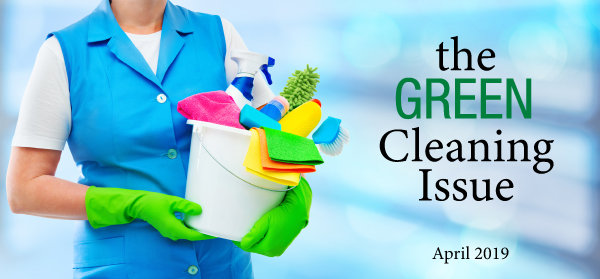So you think it’s the right marketing or philosophical choice to be a “green” cleaning company, but how do you know that the “green” products you use are
· effective at actually cleaning—removing contaminants?
· proven disinfectants—killing and/or removing 99.9% of specific bacteria and germs (keep in mind that the EPA will not register a disinfectant calling itself “green”)
· safe for cleaning technicians to use, homeowners to breath, pets and children to be near, and for the environment when washed down the drain or off-gassed into the air
· green in any way—reducing waste and pollution through the entire manufacturing and delivery process, using less water to effectively clean and disinfect (that when using “traditional” products)
There are a LOT of questions you need to answer for yourself and to be prepared to answer and provide proof for to consumers. A recent survey indicates that saying you’re “green” might get you in more trouble than simply being green and good.
ISSA News March 28, 2012 — Only 44 percent of American consumers trust companies’ green claims, according to a recent Cone Communications survey.
Eight in 10 Americans surveyed don’t believe companies are addressing all of their environmental impacts, reports The Environmental Leader. The report also found that 43 percent of consumers actively seek out environmental information on the products they buy, and 77 percent would boycott a product if misled about its green claims.
Consumers Don’t Trust Green Product Claims, Survey Says
Eight in ten Americans don’t believe companies are addressing all of their environmental impacts, and only 44 percent trust companies’ green claims, according to research by Cone Communications.
This skepticism may affect sales. In fact, as many as 77 percent would be willing to boycott if misled, according to the 2011 Cone Green Gap Trend Tracker.
Some 43 percent of consumers actively seek out environmental information on the products they buy, according to the survey. When purchasing an environmental product, 81 percent are likely to be swayed by an ecolabel such as Energy Star or WaterSense. And 80 percent would choose a product if its packaging featured specific data detailing, for instance, how much plastic was saved over an earlier version.
Environmental imagery on packaging, such as a mountain ranges or trees, would sway 44 percent of consumers, the survey says.
In general, green consumers are getting more savvy about products’ environmental claims. In this year’s survey just 36 percent of consumers thought that products labeled “environmentally friendly” have a positive impact on the environment – rather than just being less damaging than non-green products. This figure is down from 41 percent in 2011 and 48 percent in 2010.
Some 42 percent of Americans have been discouraged from buying a green product because they believed it cost more than the traditional product, and a third believed the environmentally preferred product would not be of equal quality, the survey says.





